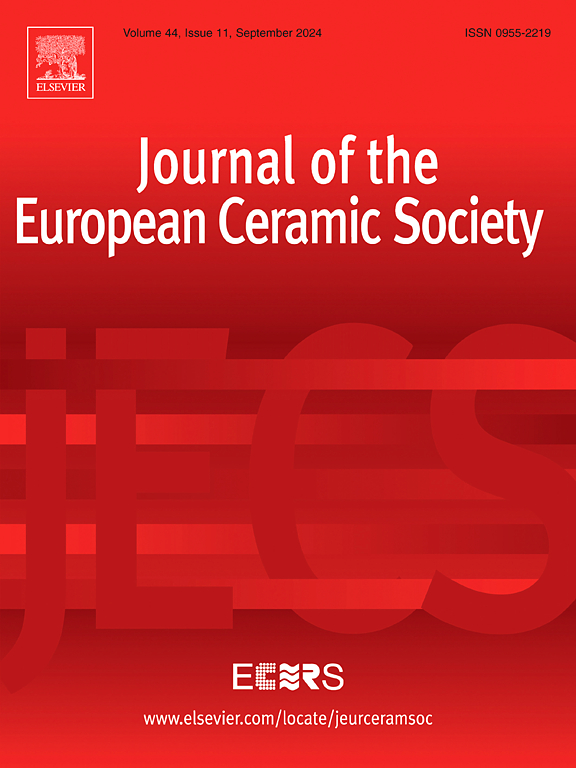Preparation of oxygen vacancy through a pre-energized method to assist flash joining of Y2O3
IF 5.8
2区 材料科学
Q1 MATERIALS SCIENCE, CERAMICS
Journal of The European Ceramic Society
Pub Date : 2025-02-27
DOI:10.1016/j.jeurceramsoc.2025.117332
引用次数: 0
Abstract
Oxygen vacancy plays a crucial role in flash joining. In this study, we use a pre-energized method as a defect engineering technology to treat the yttrium oxide before joining, thereby increasing its oxygen vacancy concentration. After the pre-energized treatment, the joint strength is significantly improved by 68.7 % under the same conditions of 1300 ℃ with a current density of 2 mA/mm2 for 300 s. This demonstrates that oxygen vacancies promote the flash joining process and reduce its onset conditions. The mechanisms of oxygen vacancy are explored experimentally and theoretically, which are identified in two areas: (1) The migration of vacancies forms fast ionic conduction paths, which allows uniform current flow and competition with established routes to enhance Joule heating. Subsequent grain homogenization further promotes overall superplastic deformation; (2) Driven by an electric field, vacancies will move to the grain boundaries to provide a channel for rapid bonding and accelerate elemental diffusion, and these diffused doping elements maybe further lead to an increase in the superplastic deformation rate.
求助全文
约1分钟内获得全文
求助全文
来源期刊

Journal of The European Ceramic Society
工程技术-材料科学:硅酸盐
CiteScore
10.70
自引率
12.30%
发文量
863
审稿时长
35 days
期刊介绍:
The Journal of the European Ceramic Society publishes the results of original research and reviews relating to ceramic materials. Papers of either an experimental or theoretical character will be welcomed on a fully international basis. The emphasis is on novel generic science concerning the relationships between processing, microstructure and properties of polycrystalline ceramics consolidated at high temperature. Papers may relate to any of the conventional categories of ceramic: structural, functional, traditional or composite. The central objective is to sustain a high standard of research quality by means of appropriate reviewing procedures.
 求助内容:
求助内容: 应助结果提醒方式:
应助结果提醒方式:


